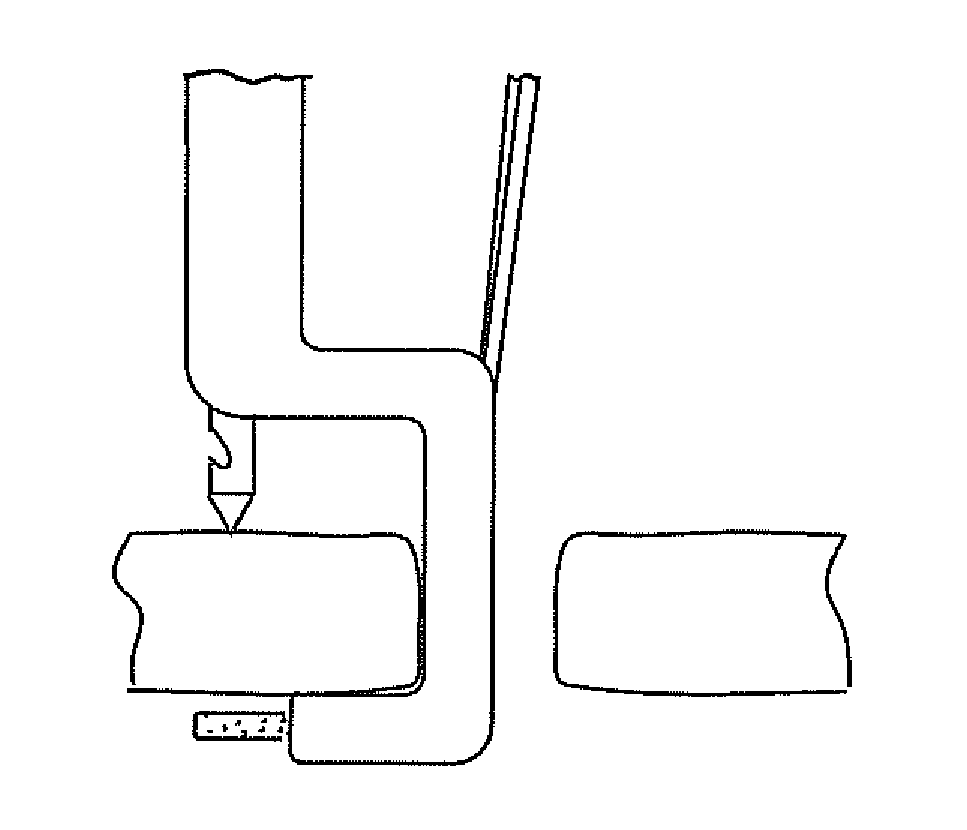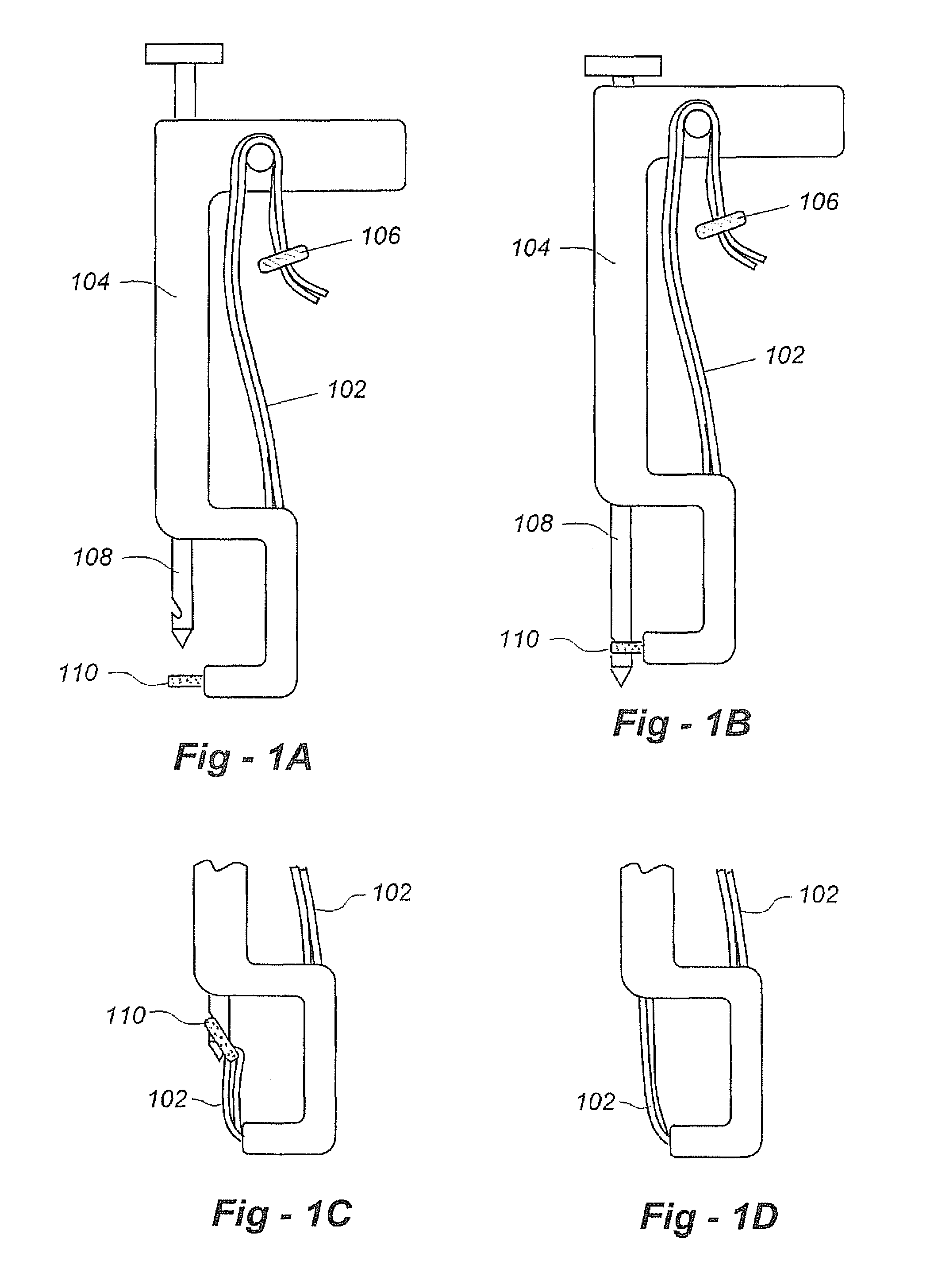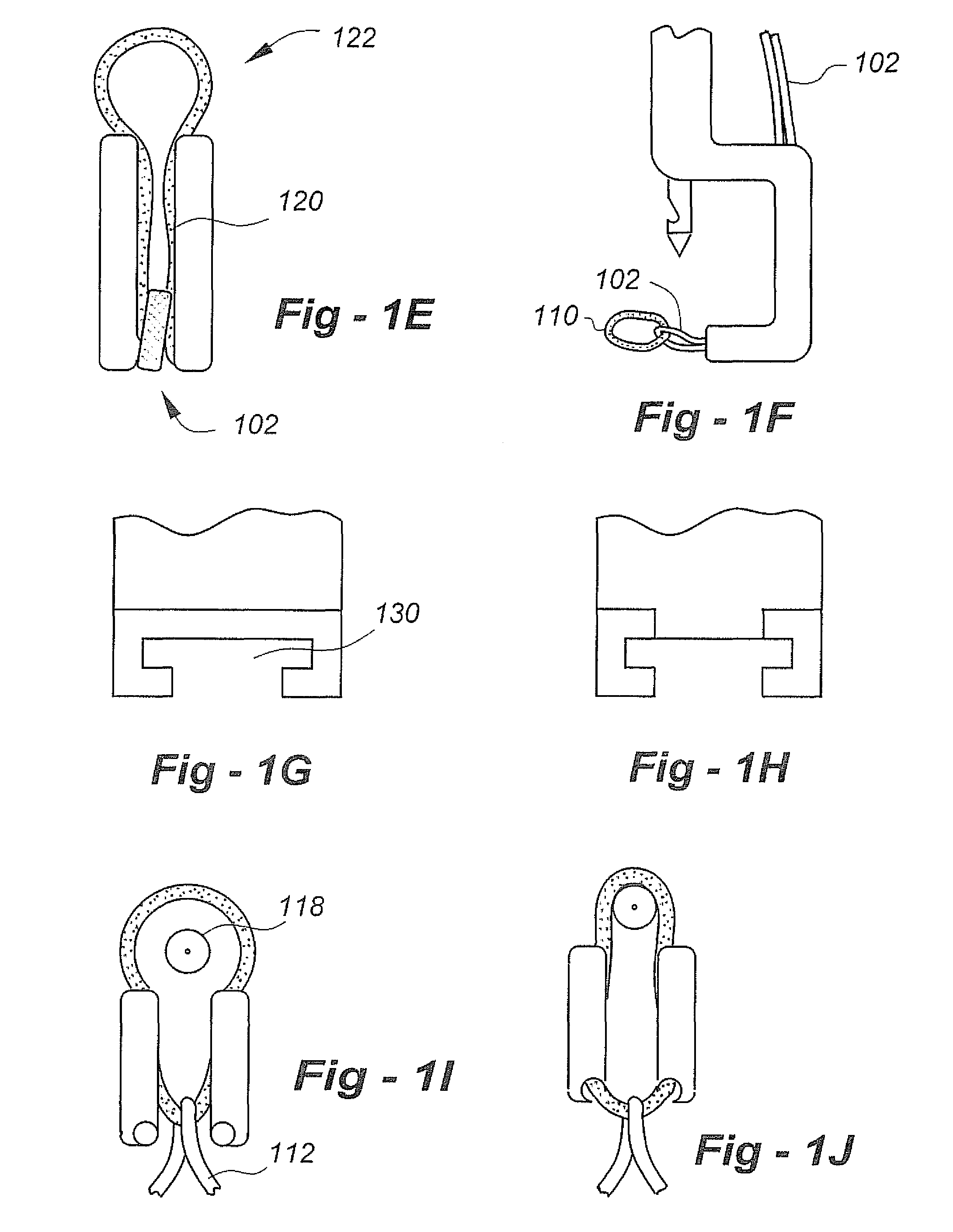Intervertebral disc treatment methods and apparatus
a treatment method and technology for intervertebral discs, applied in the field of treatment of intervertebral disc herniation and degenerative disc disease, can solve the problems of reduced treatment effectiveness reduced treatment efficiency of disc degeneration surgery, so as to prevent recurrent herniation and facilitate reconstruction
- Summary
- Abstract
- Description
- Claims
- Application Information
AI Technical Summary
Benefits of technology
Problems solved by technology
Method used
Image
Examples
Embodiment Construction
[0095]FIG. 1A is a lateral view of the preferred embodiment of the invention that may be used to pass the ends of the flexible longitudinal fixation component or the central portion of such flexible component through the AF. The Figure represents an alternative embodiment of FIG. 3A of my co-pending application PCT / US2009 / 065954, the entire content of which is incorporated herein by reference. The flexible longitudinal fixation component 102 is passed through a handle component 104. The handle component is pressed into a releasable fastening feature at the tip of the footplate at the distal end of the tool. The first and second arms of the flexible longitudinal fixation component also pass through a slot like opening on the bottom and posterior portions to the footplate of the instrument and wraps around a projection on the handle of the instrument. The first and second arms of the flexible longitudinal fixation component are then pressed into a releasable fastening feature on the h...
PUM
 Login to View More
Login to View More Abstract
Description
Claims
Application Information
 Login to View More
Login to View More - R&D
- Intellectual Property
- Life Sciences
- Materials
- Tech Scout
- Unparalleled Data Quality
- Higher Quality Content
- 60% Fewer Hallucinations
Browse by: Latest US Patents, China's latest patents, Technical Efficacy Thesaurus, Application Domain, Technology Topic, Popular Technical Reports.
© 2025 PatSnap. All rights reserved.Legal|Privacy policy|Modern Slavery Act Transparency Statement|Sitemap|About US| Contact US: help@patsnap.com



